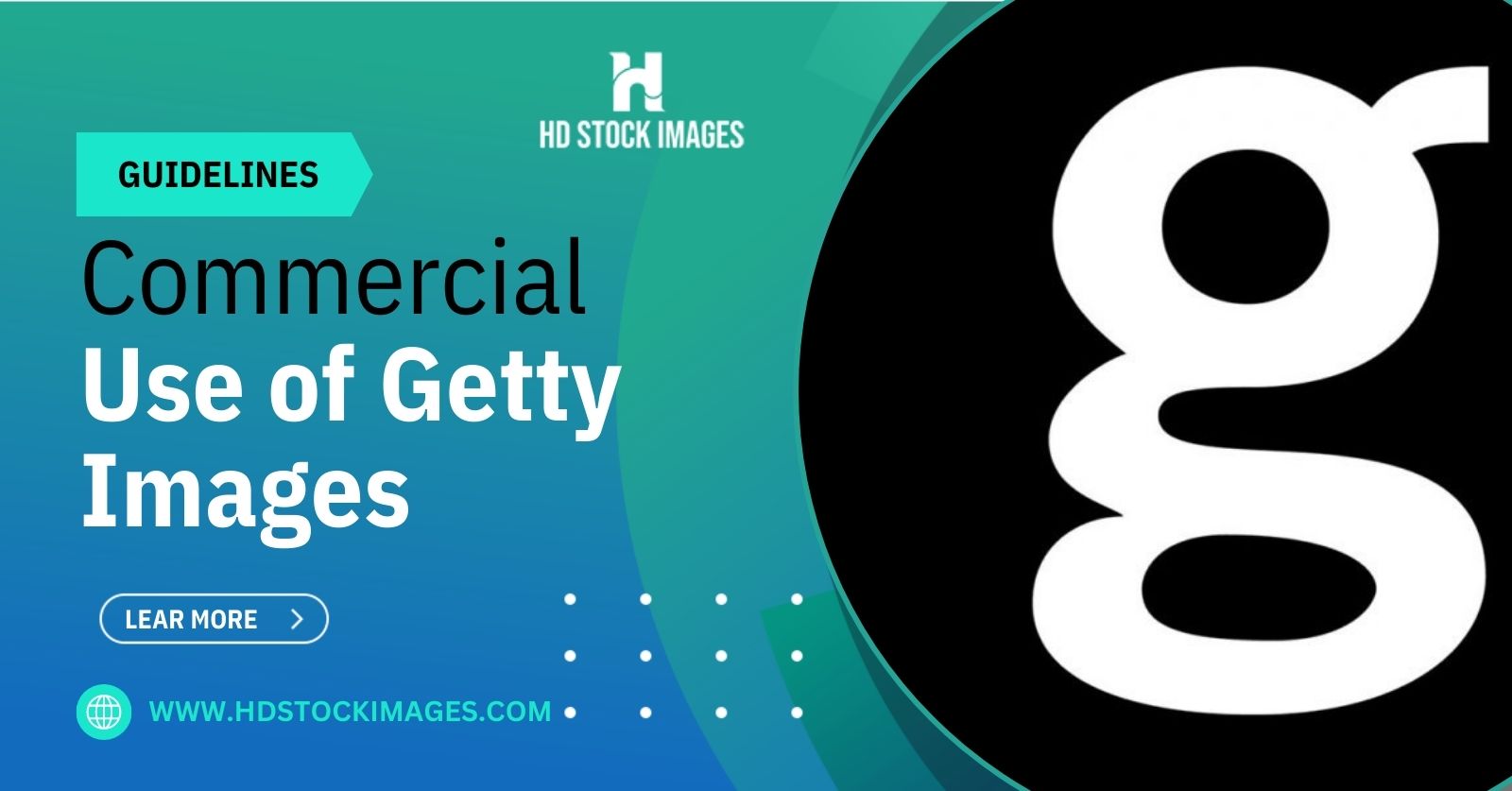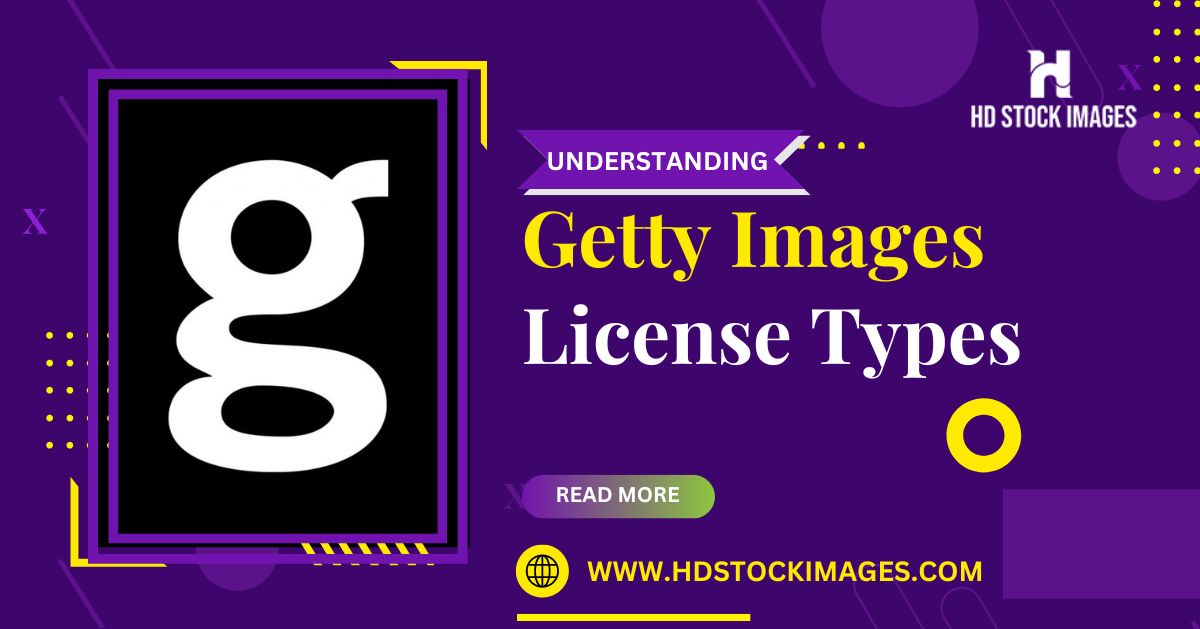Getty Images is one of the leading stock photo agencies in the world, providing a vast library of images, videos, and music. Whether you're a blogger, a marketer, or a creative professional, understanding Getty Images pricing is crucial for making informed decisions when it comes to sourcing visual content. The pricing model can seem a bit complex at first, with various factors influencing the final cost. So, let's dive into the details to help you navigate this crucial aspect of using
Types of Licenses Offered by Getty Images

When you’re looking to use images from Getty, it’s essential to understand the types of licenses they offer. Knowing the right license ensures that you comply with copyright laws while allowing you to use images effectively for your projects. Here’s a breakdown of the main types of licenses available:
- Royalty-Free License: This is one of the most commonly used licenses. With a royalty-free license, you pay a one-time fee to use an image without needing to pay royalties or licensing fees every time you use it. It allows for multiple uses in various projects, making it a cost-effective option.
- Rights Managed License: This type of license requires you to specify how you'll use the image, including the duration, geographic region, and the type of media. The price is determined based on these parameters. This license is ideal for high-profile projects where exclusivity is important.
- Editorial License: This license is intended for use in non-commercial projects, such as news articles or blogs that do not intend to promote a specific product or service. It generally comes at a lower price point than commercial licenses but restricts usage to newsworthy contexts.
- Enhanced License: This license provides broader rights than a standard royalty-free license, allowing for extensive uses, such as merchandise or printed materials. However, it comes at a higher price due to its expanded usage rights.
By understanding these licenses, you can select the right option for your specific needs and budget, ensuring you get the most out of your investment in high-quality imagery from Getty Images.
Also Read This: How to Tailor Your Search on Getty Images with Advanced Techniques for Specific Results
Factors Influencing Getty Images Costs

When it comes to purchasing images from Getty Images, several factors come into play that can significantly influence the overall cost. Understanding these factors can help you make informed decisions that best fit your budget. Here are the primary elements to consider:
- Image Type: The kind of image you choose, whether it's a stock photo, editorial image, or illustration, directly impacts pricing. Editorial images tend to be priced higher due to their newsworthiness and the rights associated with them.
- Usage Rights: The intended use of the image also affects the cost. Are you using it for personal purposes, promotional materials, or on a commercial website? The broader the usage rights, the more you can expect to pay.
- Resolution and Size: The resolution and size of the image can greatly influence its cost. Higher resolutions that are suitable for print or larger displays often come with a steeper price tag.
- Licensing Duration: How long you plan to use the image will also factor into the pricing. Short-term licenses are generally cheaper than long-term ones, especially for high-demand images.
- Market Demand: Just like any product, the demand for specific images can fluctuate. Images that are trending or have been featured prominently may carry a premium price.
By keeping these factors in mind, you can navigate Getty Images' pricing structure more effectively and find options that align with both your needs and your budget.
Also Read This: How to Remove Getty Images from the Internet Legally
Pricing Models: Rights Managed vs. Royalty-Free

When licensing photos from Getty Images, you'll encounter two primary pricing models: Rights Managed (RM) and Royalty-Free (RF). Each model has its own set of rules, usage rights, and pricing structures, so let’s break them down:
| Aspect | Rights Managed (RM) | Royalty-Free (RF) |
|---|---|---|
| Licensing | Specific usage rights are granted for a defined period and purpose. | Once bought, images can be reused without additional fees for various purposes. |
| Cost | Generally higher, based on uses, duration, and exclusivity. | Initial purchase fee, often lower and allows multiple uses. |
| Exclusivity | Offers a level of exclusivity since others may not be able to license the same image for the same purpose. | No exclusivity; multiple users may access and use the same image. |
| Best For | Specific campaigns, high-profile projects where exclusive rights are necessary. | Broad use, marketing materials, and when cost-effectiveness is a priority. |
Choosing between RM and RF depends largely on your individual needs. If you require specific usage and are prepared to invest in exclusive rights, then Rights Managed might be your best bet. On the other hand, if flexibility and cost efficiency are more important, Royalty-Free can be a more viable option for your projects.
Also Read This: How to Search Getty Images by Creative Number
5. Looking at Subscription Plans and Bulk Purchases
When it comes to licensing photos from Getty Images, one size definitely doesn't fit all. They offer a variety of subscription plans and bulk purchase options that can cater to different needs and budgets. Let’s break down these options so you can make an informed decision.
Subscription Plans: Getty Images provides flexible subscription plans for businesses that require a steady stream of photos. Here are a few things to consider:
- Monthly subscriptions: These are ideal for businesses that need images on a regular basis. You pay a monthly fee for access to a certain number of downloads.
- Annual plans: If you know you’ll need consistent access for a year, opting for an annual subscription often saves you money in the long run.
- Tiered pricing: Depending on your requirements, each plan may offer a different range of downloads, image quality, and usage rights, so compare wisely!
Bulk Purchases: For those who might not need a subscription but still want to save on costs, bulk purchases can be a great option.
- Image packs: You can buy packages of images at a discounted rate compared to individual purchases, which is perfect for occasional use.
- Customized solutions: Getty Images may also work with larger businesses to create custom packages that suit their specific needs.
Overall, choosing the right plan depends on your unique requirements and frequency of use. Exploring both subscription and bulk options will help you find a balance between quality and cost!
Also Read This: Essential Guide to Licensing Your Photo with Getty Images
6. How to Choose the Right License for Your Needs
Choosing the right license from Getty Images can be a bit daunting, especially with the array of options available. It's crucial to align your licensing choice with how you plan to use the images. Let's break this down.
Types of Licenses: Getty offers two main types of licenses:
- Rights Managed (RM): This license is typically tailored for specific uses and locations. You pay based on the intended purpose, duration, and territory. It gives you exclusivity, which can be essential for high-profile projects.
- Royalty-Free (RF): With this type, you pay once and can use the image for multiple projects, often without restrictions. This is ideal for long-term use and offers great value for businesses needing broad usage.
Factors to Consider: When choosing a license, think about:
- Usage: Will this image be used in advertising, editorial, or online content? Each category has its own licensing considerations.
- Duration: How long do you need the image? If it’s for a one-off project, RF might be sufficient, but for ongoing campaigns, RM could offer benefits.
- Exclusivity: Do you need to ensure that no one else can use this image in your market? If so, an RM license would be the right choice.
In summary, identifying your needs will help narrow down the best licensing option for you. Don't hesitate to reach out to Getty Images for guidance! They can provide insights tailored to your particular situation.
Also Read This: Understanding Getty Images Pricing for Different Licenses
Common Questions and FAQs About Getty Images Pricing
When it comes to sourcing high-quality images, many people find themselves puzzled by Getty Images' pricing structure. Below, we tackle some of the most common questions and concerns to help you navigate their pricing model effectively.
1. What types of licenses does Getty Images offer?
Getty Images typically offers two main types of licenses: *Rights Managed (RM) and Royalty-Free (RF)*. The Rights Managed license gives you exclusive rights to an image for a specific use, while the Royalty-Free license allows for broader use without ongoing fees after the initial purchase.
2. How are prices determined?
Prices at Getty Images can vary widely depending on several factors, such as:
- Image size and resolution
- Usage type (commercial, editorial, etc.)
- Exclusivity of the license
- Duration of usage
3. Are there subscription options available?
Absolutely! Getty Images offers subscription plans, which can be an economical choice for frequent users. Subscriptions allow you to download a set number of images per month at a lower average cost.
4. What if I need an image for a niche purpose?
For specialized needs, Getty Images offers custom licensing agreements. If you have unique requirements, reach out to their support team for tailored solutions.
5. Is there a way to sample images before purchasing?
Yes, Getty Images occasionally provides low-resolution downloadable previews for evaluation, but remember that these can’t be used for commercial purposes.
Hopefully, these FAQs clarify some of the swirling questions about Getty Images' pricing!
Conclusion: Making Sense of Getty Images Costs
In summary, navigating Getty Images' pricing may initially seem daunting, but breaking it down makes it manageable. The costs associated with licensing photos can vary, but understanding the key components will empower you to make informed decisions.
Key Takeaways:
- Consider the type of license that fits your project—RM for exclusivity or RF for flexibility.
- Keep in mind the factors that influence pricing, like image size and usage type.
- For consistent image needs, a subscription could be your best bet.
- Always explore the option for customized licenses, especially for niche purposes.
It's essential to weigh the value of high-quality imagery against your project's budget. While Getty Images may not always be the cheapest option, the quality and breadth of their library often justify the cost. Make sure you understand your own needs, compare options, and you're likely to find the perfect fit for your visual content requirements!
 admin
admin








